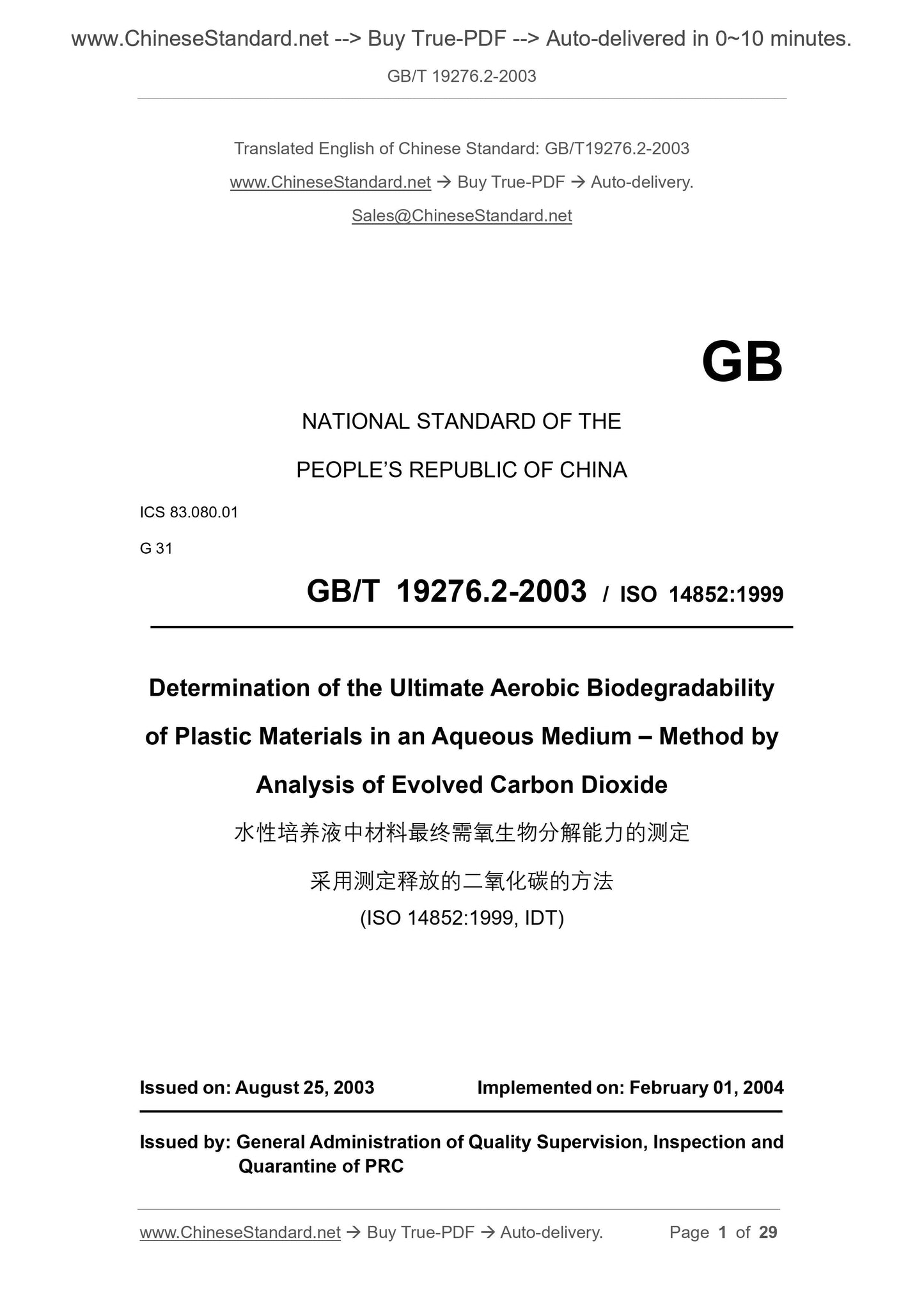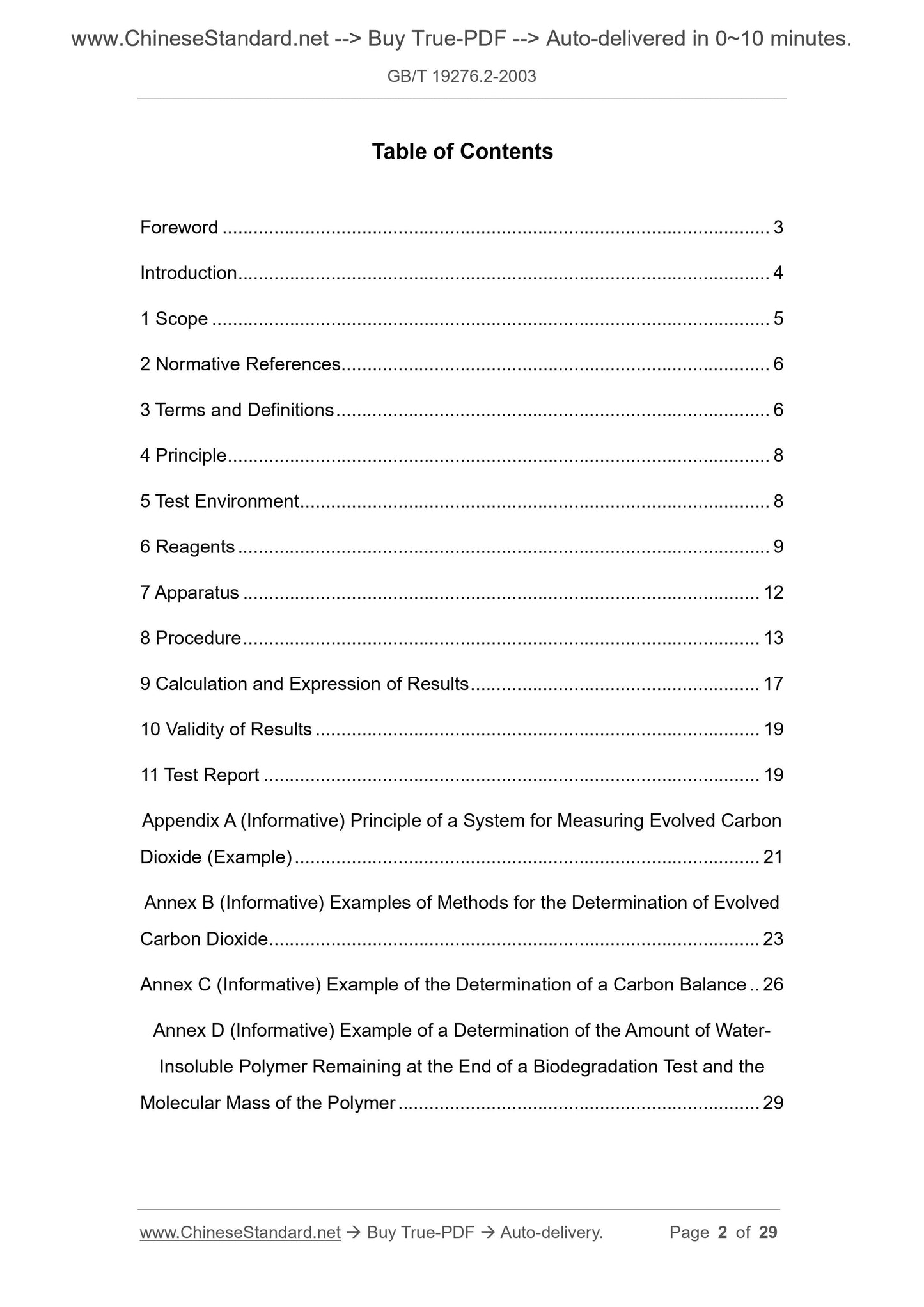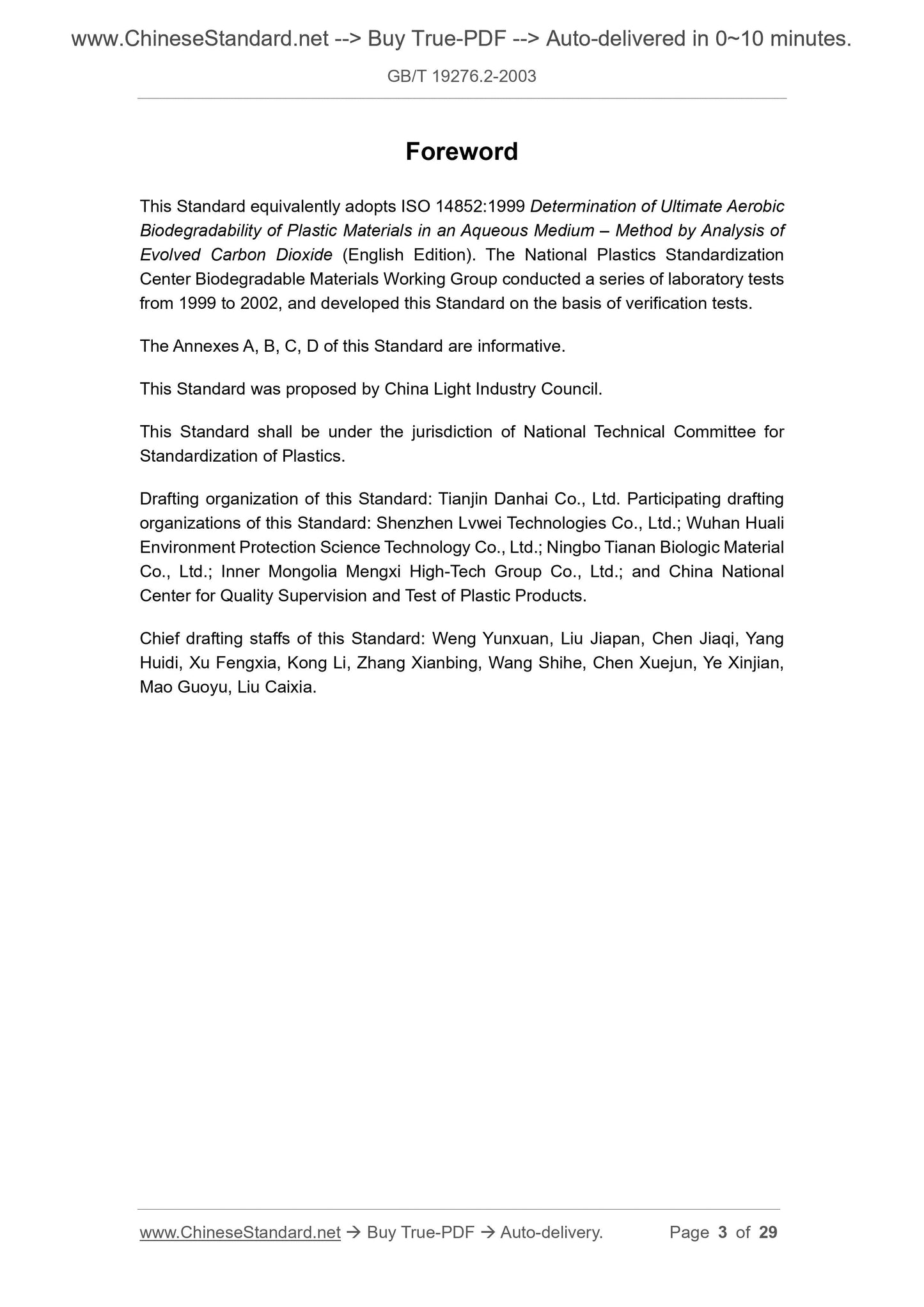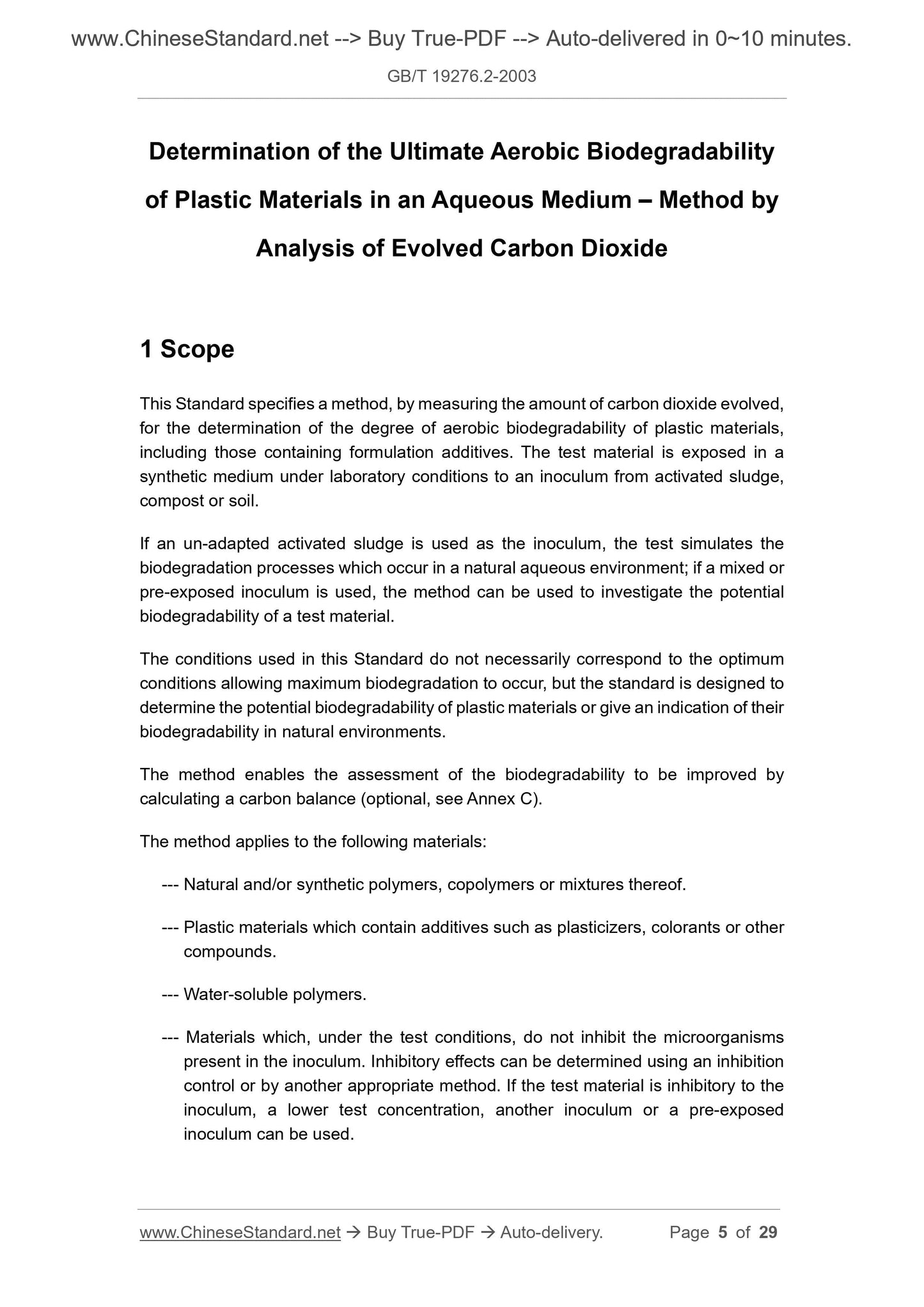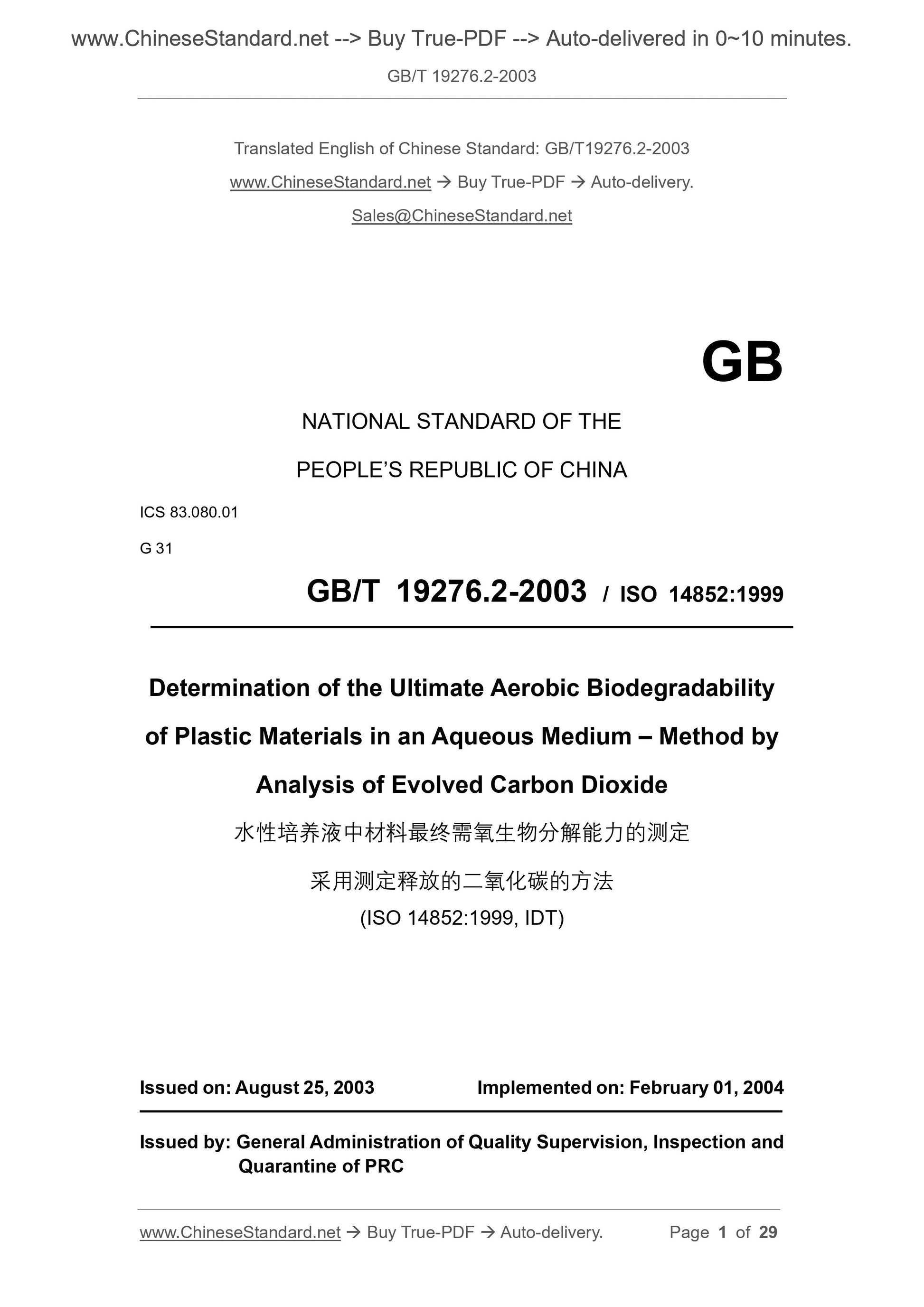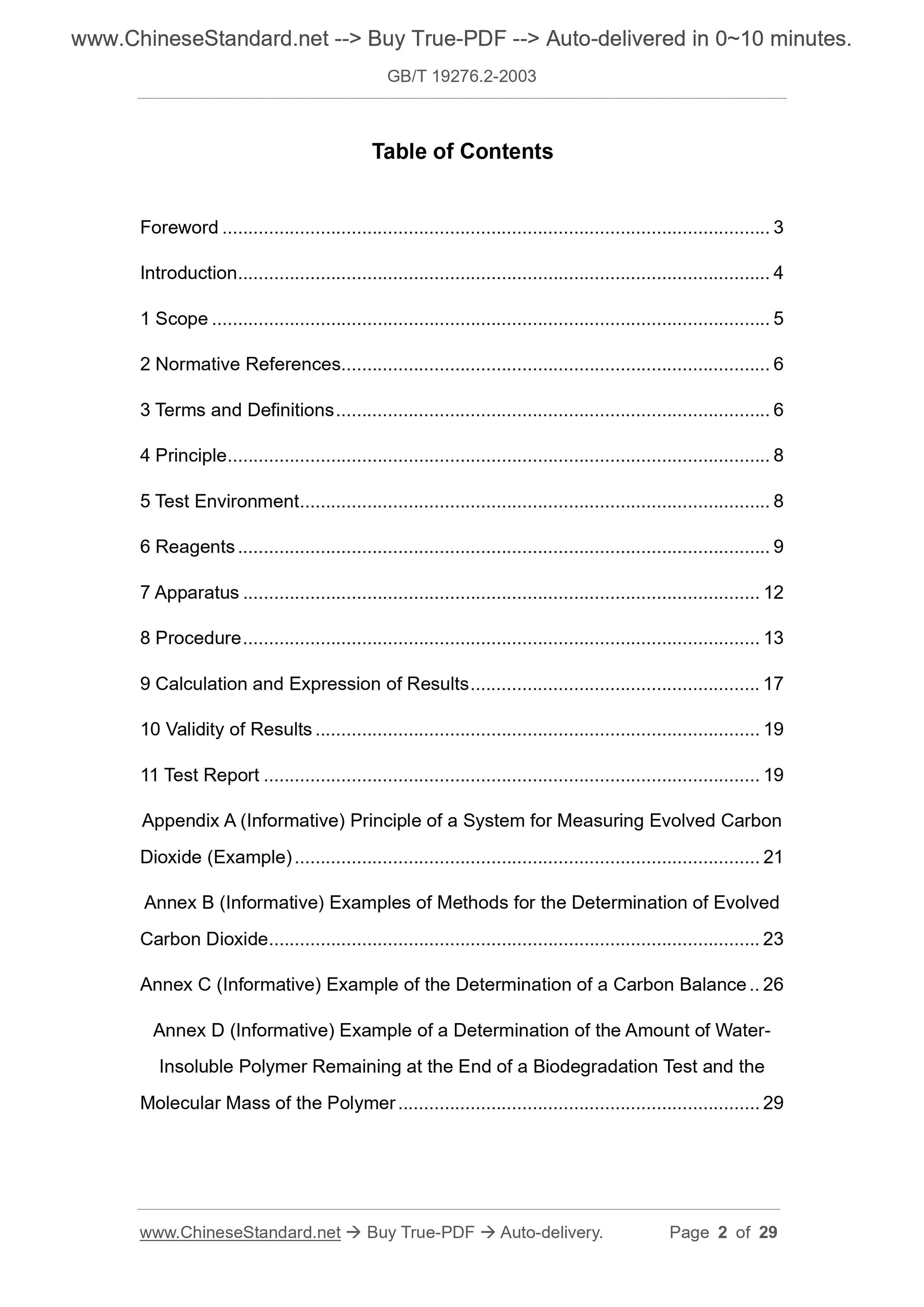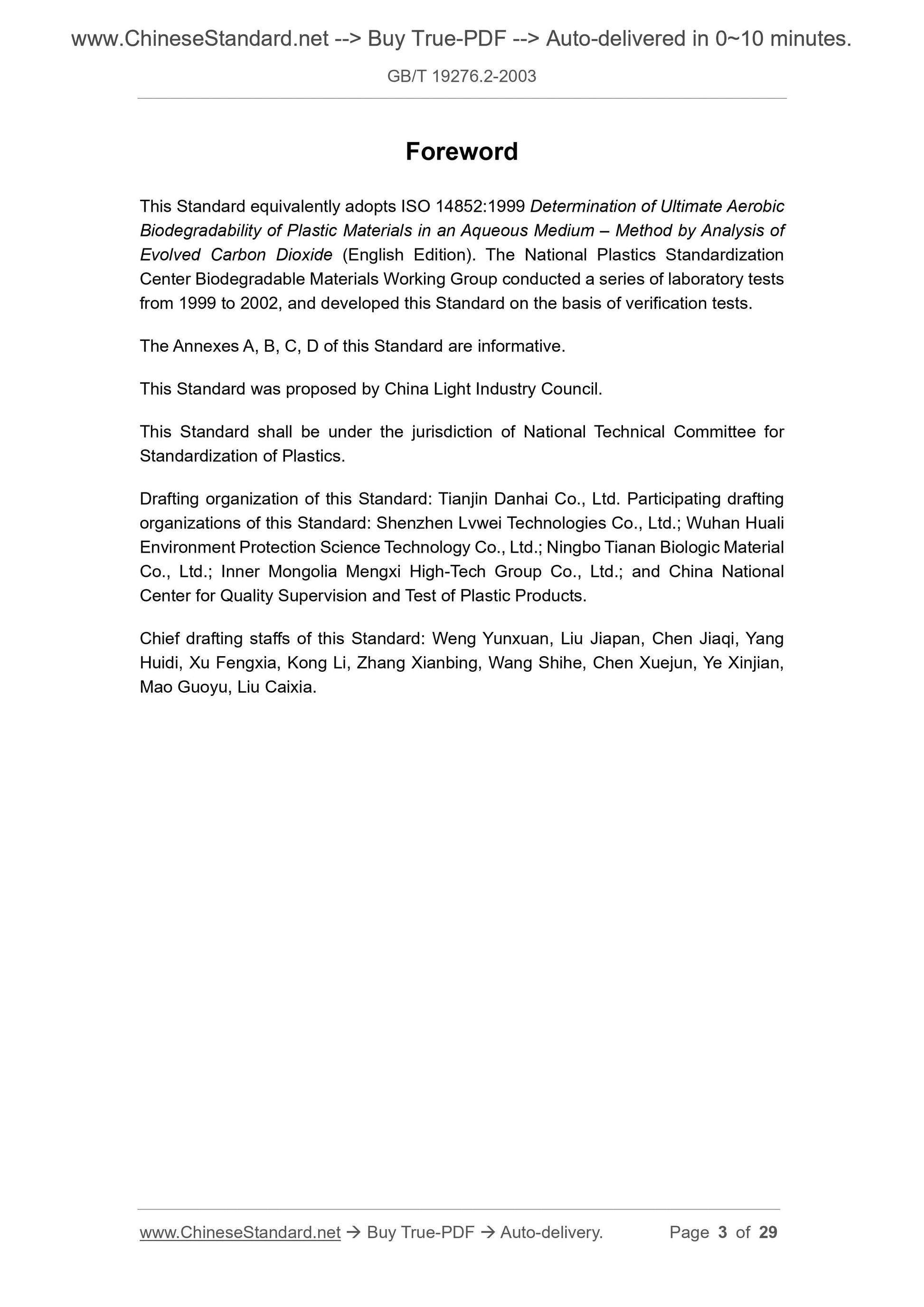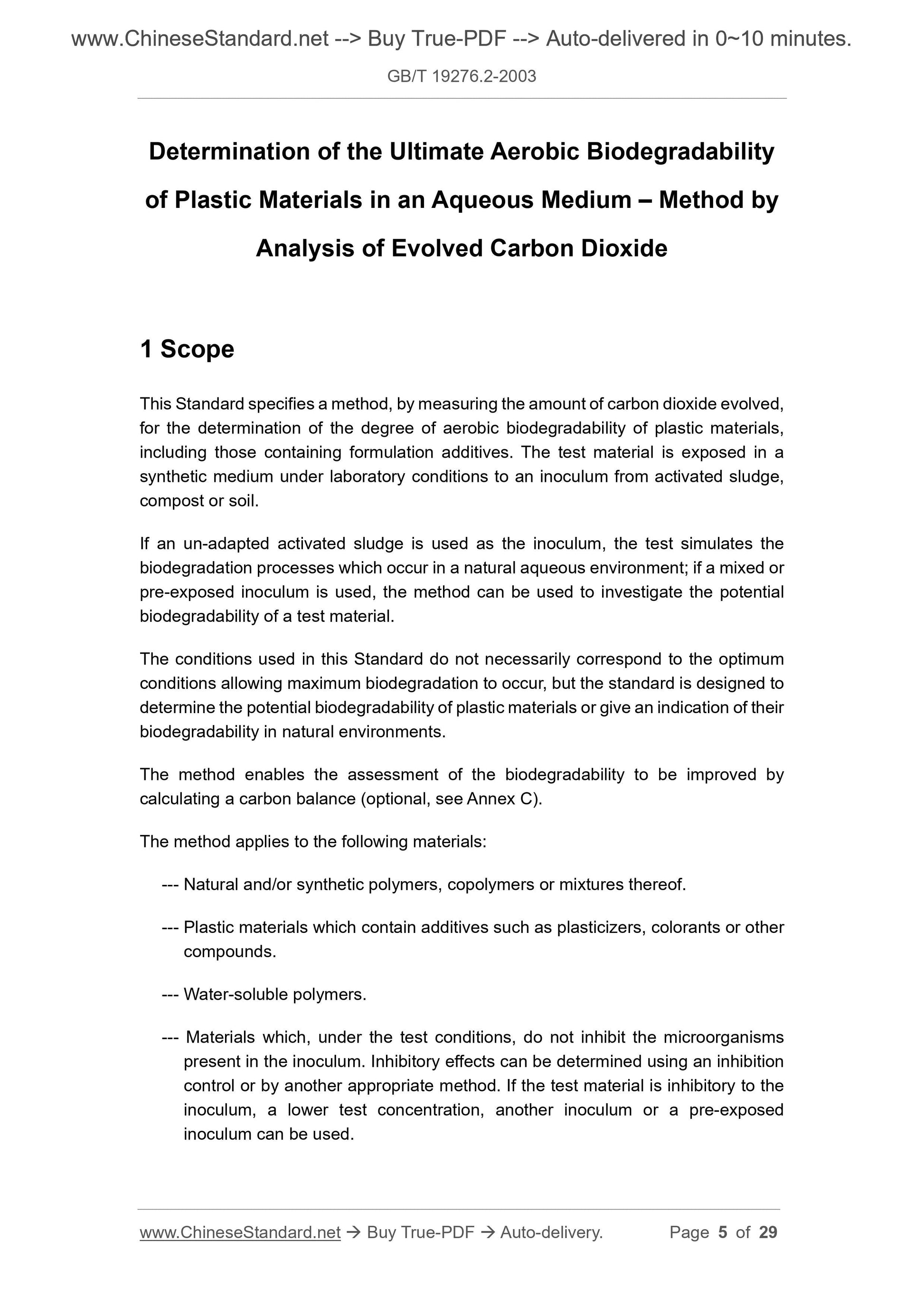1
/
of
4
www.ChineseStandard.us -- Field Test Asia Pte. Ltd.
GB/T 19276.2-2003 English PDF (GB/T19276.2-2003)
GB/T 19276.2-2003 English PDF (GB/T19276.2-2003)
Regular price
$150.00
Regular price
Sale price
$150.00
Unit price
/
per
Shipping calculated at checkout.
Couldn't load pickup availability
GB/T 19276.2-2003: Determination of the ultimate aerobic biodegradability of plastic materials in an aqueous medium -- Method by analysis of evolved carbon dioxide
Delivery: 9 seconds. Download (and Email) true-PDF + Invoice.Get Quotation: Click GB/T 19276.2-2003 (Self-service in 1-minute)
Newer / historical versions: GB/T 19276.2-2003
Preview True-PDF
Scope
This Standard specifies a method, by measuring the amount of carbon dioxide evolved,for the determination of the degree of aerobic biodegradability of plastic materials,
including those containing formulation additives. The test material is exposed in a
synthetic medium under laboratory conditions to an inoculum from activated sludge,
compost or soil.
If an un-adapted activated sludge is used as the inoculum, the test simulates the
biodegradation processes which occur in a natural aqueous environment; if a mixed or
pre-exposed inoculum is used, the method can be used to investigate the potential
biodegradability of a test material.
The conditions used in this Standard do not necessarily correspond to the optimum
conditions allowing maximum biodegradation to occur, but the standard is designed to
determine the potential biodegradability of plastic materials or give an indication of their
biodegradability in natural environments.
The method enables the assessment of the biodegradability to be improved by
calculating a carbon balance (optional, see Annex C).
The method applies to the following materials:
--- Natural and/or synthetic polymers, copolymers or mixtures thereof.
--- Plastic materials which contain additives such as plasticizers, colorants or other
compounds.
--- Water-soluble polymers.
--- Materials which, under the test conditions, do not inhibit the microorganisms
present in the inoculum. Inhibitory effects can be determined using an inhibition
control or by another appropriate method. If the test material is inhibitory to the
inoculum, a lower test concentration, another inoculum or a pre-exposed
inoculum can be used.
Basic Data
| Standard ID | GB/T 19276.2-2003 (GB/T19276.2-2003) |
| Description (Translated English) | Determination of the ultimate aerobic biodegradability of plastic materials in an aqueous medium-Method by analysis of evolved carbon dioxide |
| Sector / Industry | National Standard (Recommended) |
| Classification of Chinese Standard | G31 |
| Classification of International Standard | 83.080.01 |
| Word Count Estimation | 16,121 |
| Date of Issue | 2003-08-25 |
| Date of Implementation | 2004-02-01 |
| Adopted Standard | ISO 14852-1999; IDT |
| Regulation (derived from) | Chinese national standard approved by the announcement in 2003 No. 12 (No. 60 overall) |
| Issuing agency(ies) | General Administration of Quality Supervision, Inspection and Quarantine of the People Republic of China |
| Summary | This standard specifies: Under test conditions placed on the test material exposed by the activated sludge, compost or soil formulated into an aqueous medium, and by measuring the release to determine the amount of carbon dioxide test materials containing additives including Plastic aerobic biodegradability methods. This standard applies to: the following materials |
Share
